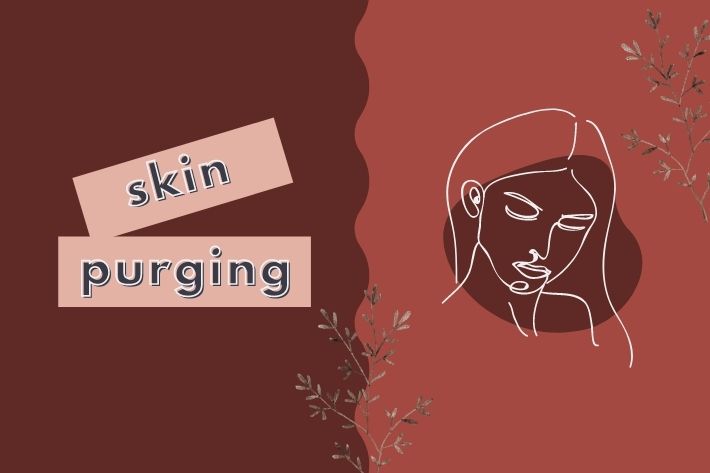Estimated Reading Time: 2 minutes
There’s nothing like the ecstatic rush to try a new skin care product hoping that it will deliver the purported benefits to your skin. You’ve read
the reviews and the testimonials, and expect the product to work on your skin too! But let’s get real – that’s not always the case. Depending on your skin type, reactions may occur when introducing a new product on your skin, resulting in skin purging.
Not as daunting as a literal purge, skin purging tends to occur when you incorporate a new skin care product into your routine. The recently introduced product may cause skin to increase its cell turnover rate, whereby dead skin cells shed more than usual and clogged pores come to the surface. As annoying as it is, skin purging is nothing to be afraid of because this process is normal. Sometimes you have to go through a storm to get to the rainbow.
Scroll through to learn how to weather skin purging effectively.

Is skin purging good or bad?
In the grand scheme of things, this process is good. Think of it like an accelerated version of skin exfoliation. All the gunk under the skin’s surface is bound to come out one way or another, and they need to be removed. While it’s understandable to want to stop using a product that caused your skin to purge and become dry and flaky, skin purging also indicates that the product is doing its job. During this period, skin is on the fast track to renewal. Dead skin cells, dirt and impurities get pushed to the surface to make way for clear and youthful-looking skin.
Skin purging vs breakout: what’s the difference?
As soon as we see a painful, reddening bump emerge on skin, our instincts tell us that we’re breaking out. But hold your horses! Skin purging isn’t the same as a breakout. While these skin concerns share similar appearances, they have distinctly different characteristics. Here’s how to tell the difference between a breakout and skin purging.
A tell-tale sign that your skin is purging is if you’ve just started using a new skin care product infused with chemical ingredients like retinol, AHA (such as glycolic acid) and BHA (such as salicylic acid). On the other hand, breakouts tend to involve using products that contain sulfates, drying alcohols, salts or essential oils.
Symptoms of skin purging include whiteheads, blackheads, papules, cysts, dryness and flaking, and they may appear in clusters at a time. Location-wise, purging occurs on areas already prone to breakouts, whereas breakouts occur on both new and existing areas.
Lastly, skin purging takes up to six weeks to recover from and shouldn’t leave blemishes or scars, unlike breakouts which can take much longer to heal and may result in blemished skin.

How do you treat skin purging?
As unhelpful as it sounds, when your skin purges, just let it be. Continue to use the new skin care product, but do so in a gradual process. You’re essentially building the skin’s tolerance to the product until you can use it every day.
While skin is most sensitive during the purging period, follow a simple skin care routine involving a cleanser, moisturizer and sunscreen. A low pH cleanser, like ROVECTIN’s Skin Essentials Conditioning Cleanser, restores skin’s oil-water balance without disrupting skin’s protective barrier. Moisturizers that contain ceramide to repair the skin barrier and hyaluronic acid to hydrate skin are well-suited to help your skin make it through this transitional period. Pyunkang Yul’s Calming Moisture Barrier Cream is another great contender to boost skin resilience. For sun protection, opt for a physical sunscreen, like SCINIC’s sensitive skin-friendly Enjoy Super Mild Sun Essence.
Most importantly, avoid harsh ingredients and fragrances, and do not pick at skin during the purging period!
RELATED:
- What Does Skin Purging Look Like and How to Treat It
- What Are the Best Makeup Trends for Fall 2021?
- How to Treat Skin in Hot and Humid Weather






